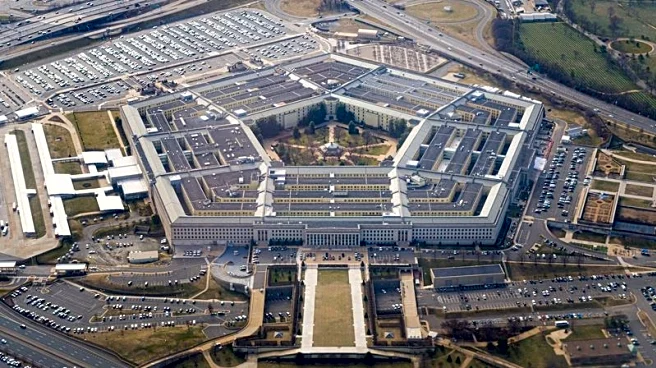What's Happening?
The Pentagon has implemented a new directive requiring prior approval for nearly all interactions between Defense Department personnel and Congress. This policy, signed by Defense Secretary Pete Hegseth,
mandates that military commanders and civilian leaders of each military branch must coordinate their communications through the agency's office of legislative affairs. The directive aims to prevent unauthorized engagements that could undermine the Department's legislative objectives. Exceptions are made for the Pentagon Inspector General's office. The move is part of a broader effort by Hegseth to control information flow and ensure consistent messaging, following previous restrictions on engagements with think tanks and external events.
Why It's Important?
This directive could significantly impact the flow of information between the Pentagon and Congress, potentially affecting legislative processes and oversight. By centralizing communication, the Pentagon aims to avoid conflicting messages that could jeopardize its budget requests and proposals. However, this move has raised concerns among lawmakers and staffers who have already experienced limited engagement with Hegseth. The policy may be seen as an attempt to stifle communication, which could hinder Congress's ability to perform its oversight functions effectively. The directive reflects a broader trend of information control within the Pentagon, which could have implications for transparency and accountability.
What's Next?
The assistant secretary of defense for legislative affairs, Dane Hughes, will conduct a review of congressional affairs activities to streamline processes and address current issues. A working group will be convened to participate in this review, with senior officials from various offices contributing. The outcome of this review could lead to adjustments in how the Pentagon manages its communications with Congress. Lawmakers and defense officials will likely continue to navigate the challenges posed by this directive, balancing the need for coordinated messaging with the necessity of maintaining open lines of communication.













